
Web Penetration Testing with Kali Linux - Second Edition
¥90.46
Build your defense against web attacks with Kali Linux 2.0 About This Book Gain a deep understanding of the flaws in web applications and exploit them in a practical manner Get hands-on web application hacking experience with a range of tools in Kali Linux 2.0 Develop the practical skills required to master multiple tools in the Kali Linux 2.0 toolkit Who This Book Is For If you are already working as a network penetration tester and want to expand your knowledge of web application hacking, then this book tailored for you. Those who are interested in learning more about the Kali Sana tools that are used to test web applications will find this book a thoroughly useful and interesting guide. What You Will Learn Set up your lab with Kali Linux 2.0 Identify the difference between hacking a web application and network hacking Understand the different techniques used to identify the flavor of web applications Expose vulnerabilities present in web servers and their applications using server-side attacks Use SQL and cross-site *ing (XSS) attacks Check for XSS flaws using the burp suite proxy Find out about the mitigation techniques used to negate the effects of the Injection and Blind SQL attacks In Detail Kali Linux 2.0 is the new generation of the industry-leading BackTrack Linux penetration testing and security auditing Linux distribution. It contains several hundred tools aimed at various information security tasks such as penetration testing, forensics, and reverse engineering. At the beginning of the book, you will be introduced to the concepts of hacking and penetration testing and will get to know about the tools used in Kali Linux 2.0 that relate to web application hacking. Then, you will gain a deep understanding of SQL and command injection flaws and ways to exploit the flaws. Moving on, you will get to know more about *ing and input validation flaws, AJAX, and the security issues related to AJAX. At the end of the book, you will use an automated technique called fuzzing to be able to identify flaws in a web application. Finally, you will understand the web application vulnerabilities and the ways in which they can be exploited using the tools in Kali Linux 2.0. Style and approach This step-by-step guide covers each topic with detailed practical examples. Every concept is explained with the help of illustrations using the tools available in Kali Linux 2.0.
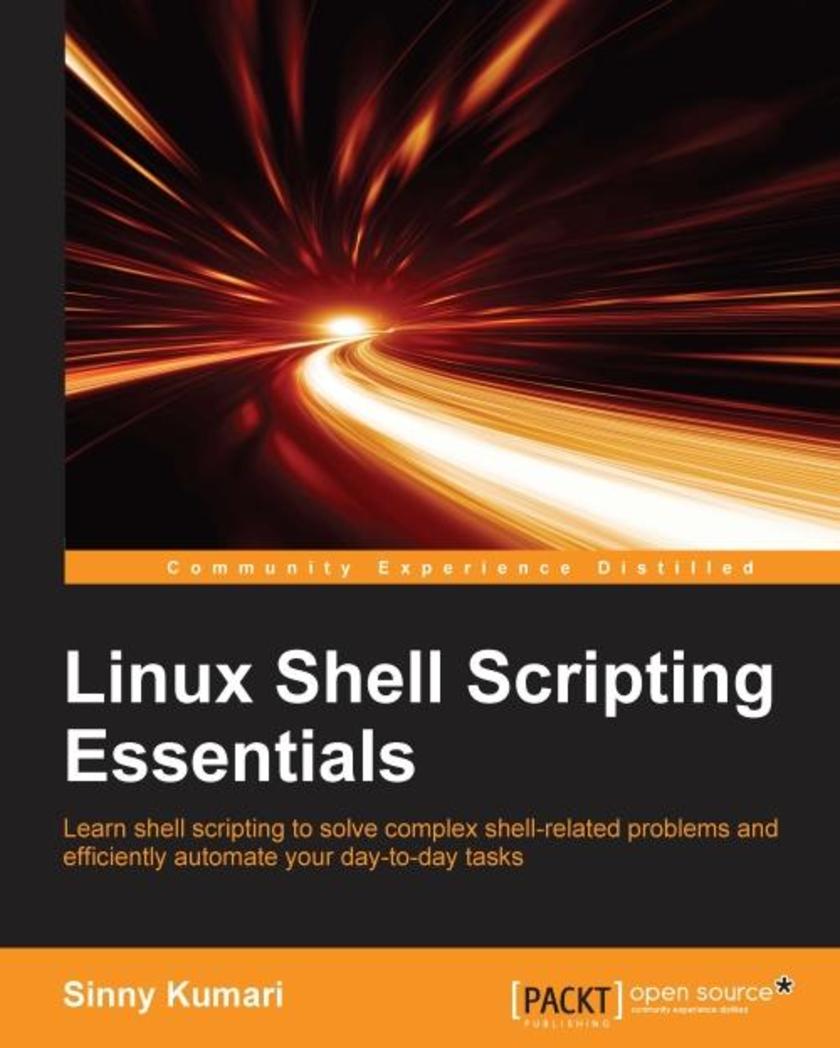
Linux Shell Scripting Essentials
¥90.46
Learn shell *ing to solve complex shell-related problems and to efficiently automate your day-to-day tasks About This Book Familiarize yourself with the terminal by learning about powerful shell features Automate tasks by writing shell *s for repetitive work Packed with easy-to-follow, hands-on examples to help you write any type of shell * with confidence Who This Book Is For This book is aimed at administrators and those who have a basic knowledge of shell *ing and who want to learn how to get the most out of writing shell *s. What You Will Learn Write effective shell *s easily Perform search operations and manipulate large text data with a single shell command Modularize reusable shell *s by creating shell libraries Redirect input, output, and errors of a command or * execution to other streams Debug code with different shell debugging techniques to make your *s bug-free Manage processes, along with the environment variables needed to execute them properly Execute and embed other languages in your *s Manage creation, deletion, and search operations in files In Detail Shell *ing is a quick method to prototype complex applications or problems. Shell *s are a collection of commands to automate tasks, usually those for which the user has a repeated need, when working on Linux-based systems. Using simple commands or a combination of them in a shell can solve complex problems easily. This book starts with the basics, including essential commands that can be executed on Linux systems to perform tasks within a few nanoseconds. You’ll learn to use outputs from commands and transform them to show the data you require. Discover how to write shell *s easily, execute * files, debug, and handle errors. Next, you’ll explore environment variables in shell programming and learn how to customize them and add a new environment. Finally, the book walks you through processes and how these interact with your shell *s, along with how to use *s to automate tasks and how to embed other languages and execute them. Style and approach This book is a pragmatic guide to writing efficient shell programs, complete with hands-on examples and tips.

The Dangerous Dandy
¥24.44
Left all but penniless by the death of her husband, Lady Maude Camberley is reduced to scraping a living through gambling and the generosity of Society gentlemen. So when the stupendously wealthy but conceited and cruel Prince Ahmadi of Kahriz offers her ten thousand pounds for the hand in marriage of her young beautiful daughter, Alyna, she accepts at once. Poor Alyna is utterly mortified and horrified as she finds the Prince utterly repulsive and could bear it if he touched her. Her mother will not listen to her pleas as she is frantic for the money the Prince has offered her. Alyna is so desperate that she is on the verge of suicide when a handsome Good Samaritan dissuades her on the bank of the River Thames. He is the handsome and debonair Lord Dorrington, who is instantly struck by Alyna’s plight and he then sets about protecting her from the evil Prince’s clutches. Alynda is adamant that she hates all men and will never marry, but gradually the noble good looks and gentle humour of Lord Dorrington helps to change her mind. And just as she realises that she is in love, the dastardly Prince reappears bent on revenge and she fears desperately for the life of her newfound love.
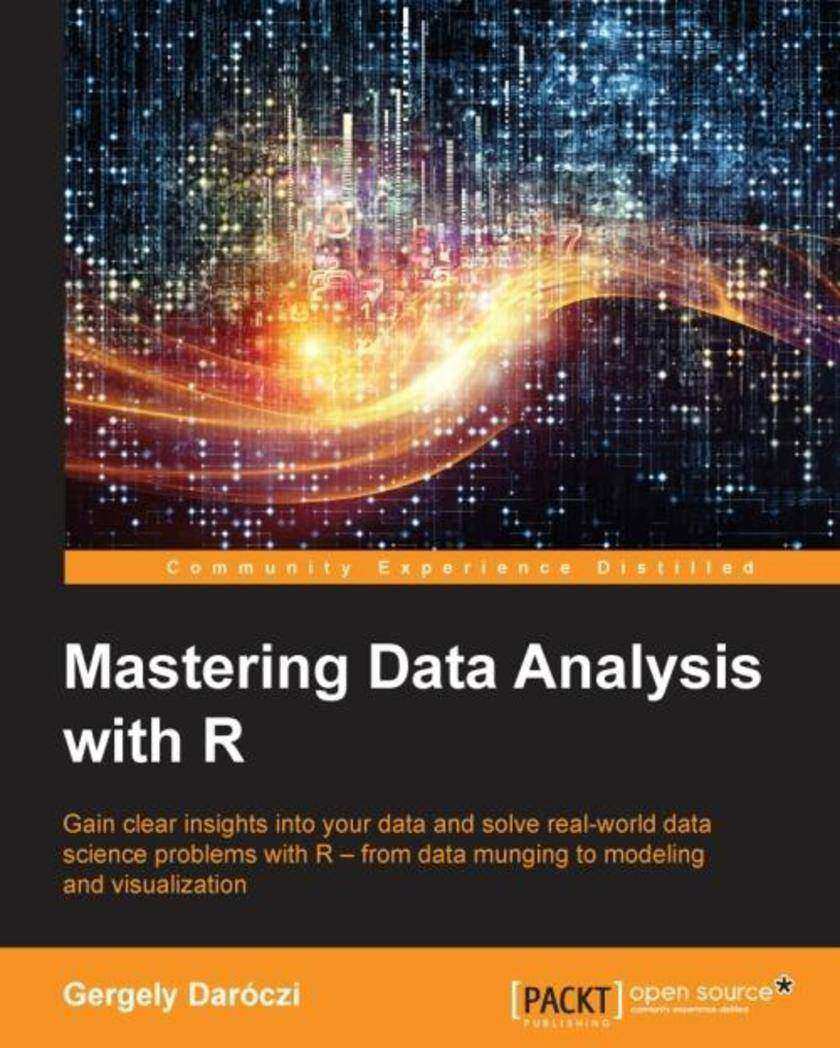
Mastering Data Analysis with R
¥99.18
Gain sharp insights into your data and solve real-world data science problems with R—from data munging to modeling and visualization About This Book Handle your data with precision and care for optimal business intelligence Restructure and transform your data to inform decision-making Packed with practical advice and tips to help you get to grips with data mining Who This Book Is For If you are a data scientist or R developer who wants to explore and optimize your use of R’s advanced features and tools, this is the book for you. A basic knowledge of R is required, along with an understanding of database logic. What You Will Learn Connect to and load data from R’s range of powerful databases Successfully fetch and parse structured and unstructured data Transform and restructure your data with efficient R packages Define and build complex statistical models with glm Develop and train machine learning algorithms Visualize social networks and graph data Deploy supervised and unsupervised classification algorithms Discover how to visualize spatial data with R In Detail R is an essential language for sharp and successful data analysis. Its numerous features and ease of use make it a powerful way of mining, managing, and interpreting large sets of data. In a world where understanding big data has become key, by mastering R you will be able to deal with your data effectively and efficiently. This book will give you the guidance you need to build and develop your knowledge and expertise. Bridging the gap between theory and practice, this book will help you to understand and use data for a competitive advantage. Beginning with taking you through essential data mining and management tasks such as munging, fetching, cleaning, and restructuring, the book then explores different model designs and the core components of effective analysis. You will then discover how to optimize your use of machine learning algorithms for classification and recommendation systems beside the traditional and more recent statistical methods. Style and approach Covering the essential tasks and skills within data science, Mastering Data Analysis provides you with solutions to the challenges of data science. Each section gives you a theoretical overview before demonstrating how to put the theory to work with real-world use cases and hands-on examples.
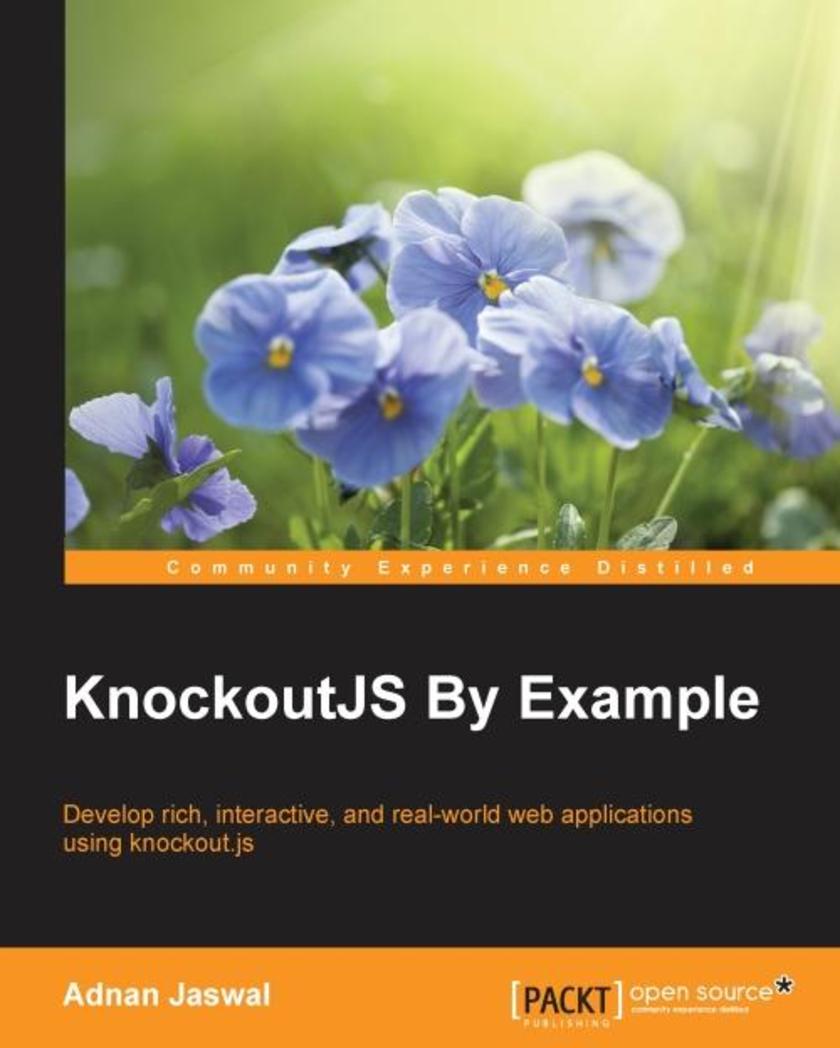
KnockoutJS by Example
¥80.65
Develop rich, interactive, and real-world web applications using knockout.js About This Book Master the full range of features provided by knockout.js such as declarative binding, automatic refresh, dependency tracking, and templating using this project based guide Tackle real-world problems such as page navigation, forms, composite UI components, maps integration, server interaction for CRUD operations, and application security Discover the power of knockout.js as you build applications with complexity ranging from beginner to advanced Extend and customize knockout.js to harness its full potential Integrate with third party libraries and APIs to build fully featured applications Who This Book Is For This book is intended for designers and developers who want to learn how to use Knockout to develop rich, interactive, and modular web applications. The book assumes no prior knowledge of the Knockout library but basic familiarity with HTML, CSS, and JavaScript would be helpful. What You Will Learn Explore the basic concept behind the Model-View-View Model (MVVM) design pattern and how it is implemented by Knockout Develop a modular application skeleton based on the module pattern that can be used as a template for your projects Create single page, rich, interactive, modular, real-world applications using Knockout Use knockout.js with other libraries and APIs such as JQuery, Bootstrap, and Google Maps API to give your users a richer experience Create a real-world dynamic web form to capture user information and learn how Knockout makes it easier to capture, validate, and submit form data Develop and use dynamic UI components such as grids, tabs, dialogs, and wizards Extend knockout.js to add custom extenders, binding handlers, and observables Communicate with the backend server using JSON over restful web services Secure your single page application using token-based authentication In Detail Knockout is an open source JavaScript library that lets you develop rich, interactive, and modular web applications. It reduces the complexities of JavaScript and HTML development by following the Model-View-View Model (MVVM) design pattern. It allows you to efficiently develop highly scalable, testable, and maintainable web applications that are rich and interactive. Knockout is a pure JavaScript library and supports all major browsers. This book starts with introducing the key features and concepts of knockout.js. It helps you create an application skeleton and a hello world application. You will develop a To-Do list application that aims to show the basic features of knockout.js in action such as data binding and observables, following which you will develop a dynamic online customer registration form that captures and validates customer information. This book will further walk your way to develop a customer banking portal, which demonstrates the use of knockout.js with components such as navigation bars, tabs, carousel, master details view, panels, forms, wizards, and modal dialogs. You will also discover to use token-based authentication and authorization to secure the customer banking portal and move on to creating an editable products grid with CRUD operations. Finally, you will explore using the Google maps api with knockout.js. By working along with the examples, this book will not only leave you with the basic understanding of knockout.js fundamentals but you will also have a web application ready instantly. Style and approach The book takes an iterative approach in explaining and building the sample applications. The applications are built in small portions with each portion delivering a set of features. It is an easy-to-follow yet comprehensive hands-on guide, which is full of real-world applications.
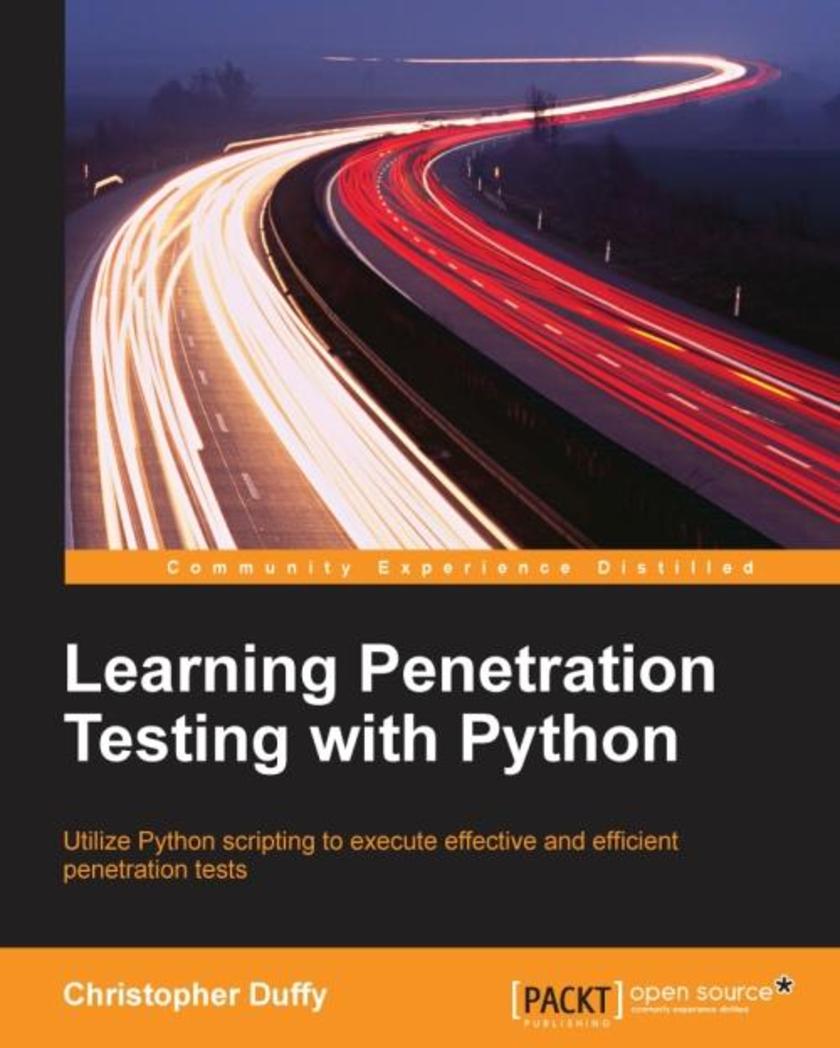
Learning Penetration Testing with Python
¥90.46
Utilize Python *ing to execute effective and efficient penetration tests About This Book Understand how and where Python *s meet the need for penetration testing Familiarise yourself with the process of highlighting a specific methodology to exploit an environment to fetch critical data Develop your Python and penetration testing skills with real-world examples Who This Book Is For If you are a security professional or researcher, with knowledge of different operating systems and a conceptual idea of penetration testing, and you would like to grow your knowledge in Python, then this book is ideal for you. What You Will Learn Familiarise yourself with the generation of Metasploit resource files Use the Metasploit Remote Procedure Call (MSFRPC) to automate exploit generation and execution Use Python’s Scrapy, network, socket, office, Nmap libraries, and custom modules Parse Microsoft Office spreadsheets and eXtensible Markup Language (XML) data files Write buffer overflows and reverse Metasploit modules to expand capabilities Exploit Remote File Inclusion (RFI) to gain administrative access to systems with Python and other *ing languages Crack an organization’s Internet perimeter Chain exploits to gain deeper access to an organization’s resources Interact with web services with Python In Detail Python is a powerful new-age *ing platform that allows you to build exploits, evaluate services, automate, and link solutions with ease. Python is a multi-paradigm programming language well suited to both object-oriented application development as well as functional design patterns. Because of the power and flexibility offered by it, Python has become one of the most popular languages used for penetration testing. This book highlights how you can evaluate an organization methodically and realistically. Specific tradecraft and techniques are covered that show you exactly when and where industry tools can and should be used and when Python fits a need that proprietary and open source solutions do not. Initial methodology, and Python fundamentals are established and then built on. Specific examples are created with vulnerable system images, which are available to the community to test *s, techniques, and exploits. This book walks you through real-world penetration testing challenges and how Python can help. From start to finish, the book takes you through how to create Python *s that meet relative needs that can be adapted to particular situations. As chapters progress, the * examples explain new concepts to enhance your foundational knowledge, culminating with you being able to build multi-threaded security tools, link security tools together, automate reports, create custom exploits, and expand Metasploit modules. Style and approach This book is a practical guide that will help you become better penetration testers and/or Python security tool developers. Each chapter builds on concepts and tradecraft using detailed examples in test environments that you can simulate.
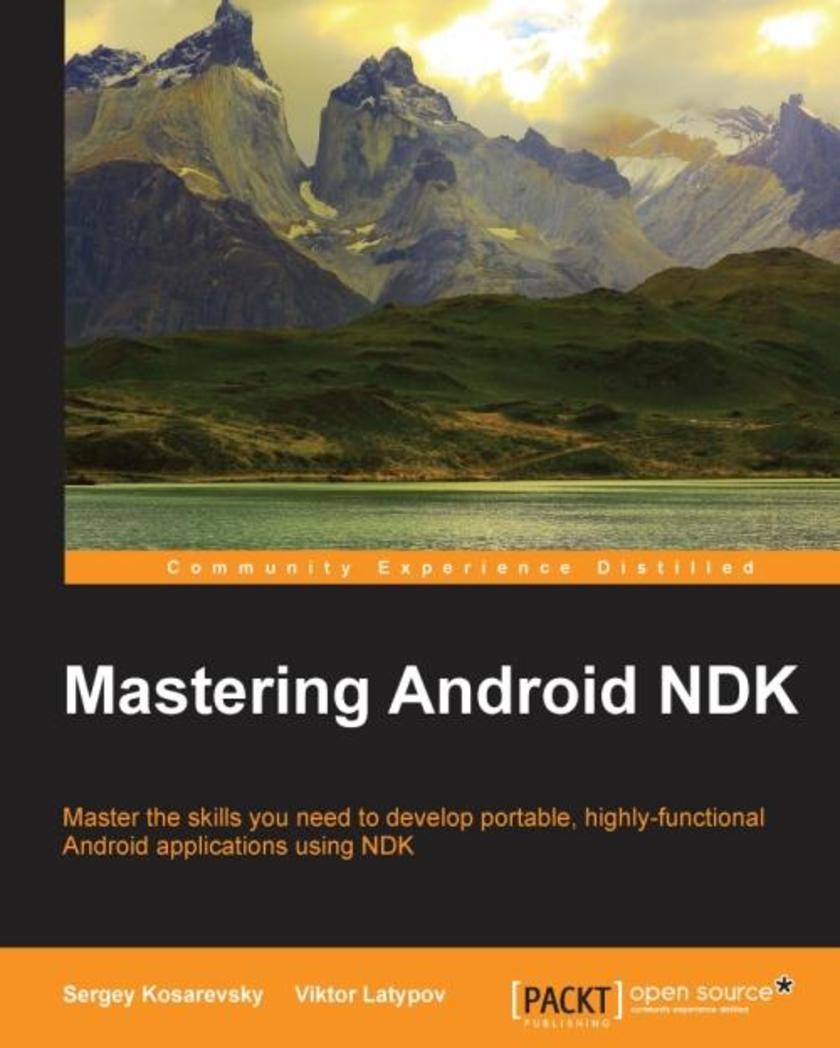
Mastering Android NDK
¥90.46
Master the skills you need to develop portable, highly-functional Android applications using NDK About This Book Develop portable games using Android NDK and debug them on your desktop Familiarise yourself with different popular C++ libraries on Android and use them in your games Write multi-threaded code with graphics, sound, networking, and resource storage Who This Book Is For If you want to leverage your C++ skills in mobile development and increase the performance of your Android applications, then this is the book for you. Knowledge of C or C++ is assumed, including pointer manipulation, multi-threading, object-oriented programming concepts, and the basics of C++11. It would be an added advantage if you know how to develop applications without any IDE. What You Will Learn Explore popular C++ libraries and use them on Android Write portable, multithreaded native networking code Create portable audio framework using OpenAL Implement portable rendering framework using OpenGL ES 3 Debug mobile applications on your desktop machine Access resources from APK archives Render text with FreeType In Detail Android NDK is used for multimedia applications that require direct access to system resources. NDK is also the key for portability, which in turn allows a reasonably comfortable development and debugging process using familiar tools such as GCC and Clang toolchains. This is a hands-on guide to extending your game development skills with Android NDK. The book takes you through many clear, step-by-step example applications to help you further explore the features of Android NDK and some popular C++ libraries and boost your productivity by debugging the development process. Through the course of this book, you will learn how to write portable multi-threaded native code, use HTTP networking in C++, play audio files, use OpenGL ES 3, and render high-quality text. Each chapter aims to take you one step closer to building your application. By the end of this book, you will be able to create an engaging, complete gaming application. Style and approach This book adopts a step-by-step approach and each chapter is based on the material from the previous ones. The book focuses on putting to your knowledge of C++ use while you develop Android applications of your own.

Mastering Flask
¥90.46
Gain expertise in Flask to create dynamic and powerful web applications About This Book Work with scalable Flask application structures to create complex web apps Discover the most powerful Flask extensions and learn how to create one Deploy your application to real-world platforms using this step-by-step guide Who This Book Is For If you are a Flask user who knows the basics of the library and how to create basic web pages with HTML and CSS, and you want to take your applications to the next level, this is the book for you. Harnessing the full power of Flask will allow you to create complex web applications with ease. What You Will Learn Set up a best practices Python environment Use SQLAlchemy to programmatically query a database Develop templates in Jinja Set up an MVC environment for Flask Discover NoSQL, when to use it, when not to, and how to use it Develop a custom Flask extension Use Celery to create asynchronous tasks In Detail Flask is a library that allows programmers to create web applications in Python. Flask is a micro-framework that boasts a low learning curve, a large community, and the power to create complex web apps. However, Flask is easy to learn but difficult to master. Starting from a simple Flask app, this book will walk through advanced topics while providing practical examples of the lessons learned. After building a simple Flask app, a proper app structure is demonstrated by transforming the app to use a Model-View-Controller (MVC) architecture. With a scalable structure in hand, the next chapters use Flask extensions to provide extra functionality to the app, including user login and registration, NoSQL querying, a REST API, an admin interface, and more. Next, you’ll discover how to use unit testing to take the guesswork away from making sure the code is performing as it should. The book closes with a discussion of the different platforms that are available to deploy a Flask app on, the pros and cons of each one, and how to deploy on each one. Style and approach With plenty of useful examples, this guide introduces new concepts and then shows you how those concepts can be used in a real-world environment. Most sections are based around a single example app that is developed throughout the book.
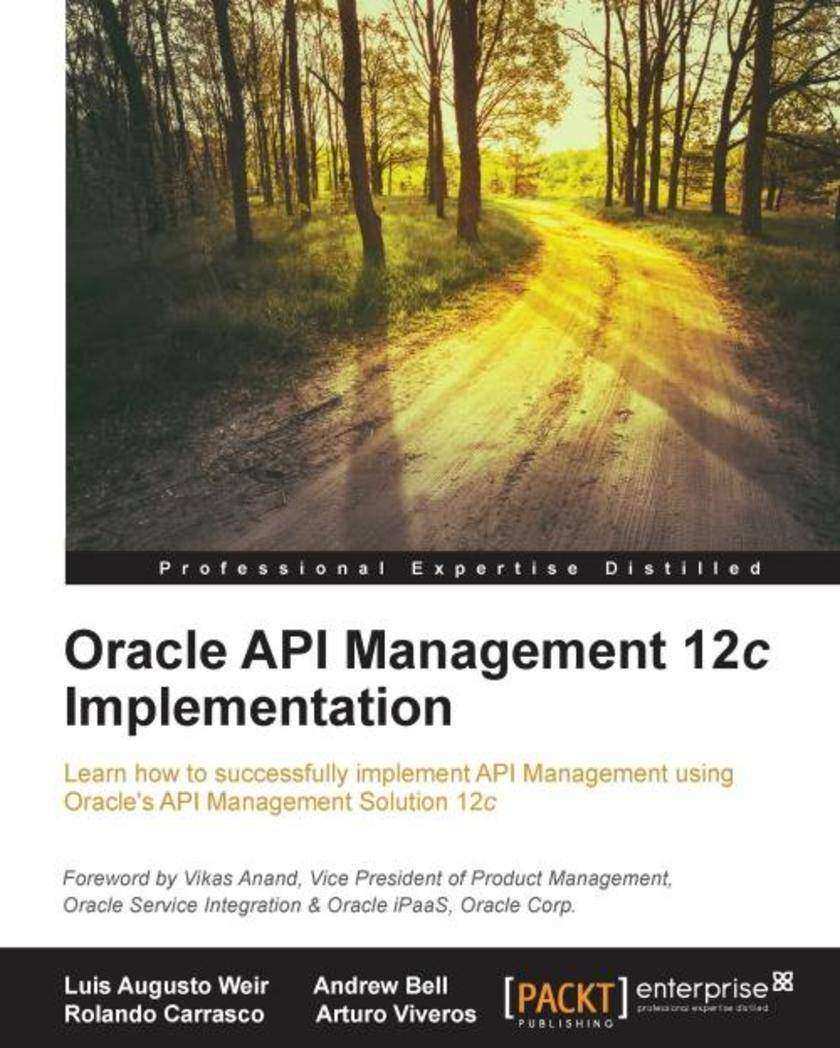
Oracle API Management 12c Implementation
¥107.90
Learn how to successfully implement API management using Oracle’s API Management Solution 12c About This Book Explore the key concepts, goals, and objectives of API Management and learn how to implement it using the Oracle API Management Solution Understand the concepts and objectives of the Application Service Governance (ASG), along with the governance framework that encompasses people, processes, and technology Get to grips with API Management readiness assessments, gap analysis, digital reference architecture, and implementation roadmaps Who This Book Is For This book is for Enterprise Architects, Solution Architects, Technical Architects, and SOA and API consultants who want to successfully implement API Management using the Oracle API Management Solution products. What You Will Learn Understand how to manage a set of APIs Discover the differences and similarities between API Management and SOA Governance, and where and how these two disciplines converge into Application Services Governance (ASG) Grasp information about ASG and how to define an ASG governance framework Understand the challenges for organizations looking to expose APIs to the external world. Identify common scenarios and how to solve them Define an Oracle API management deployment topology Install and configure Oracle API Catalog (OAC), Oracle API Manager (OAPIM), and Oracle API Gateway (OAG) Learn about API sub*ions and API community management with the OAPIM portal Implement Oracle API Manager (OAPIM) including creation, publishing, management and deprecation of APIs In Detail Oracle SOA Governance is a comprehensive, service-orientated governance solution that is designed to make the transition to SOA easier. API management is the discipline that governs the software development lifecycle of APIs. It defines the tools and processes needed to build, publish and operate APIs including the management of the community of developers around it. This book illustrates how to successfully implement API Management in your organization. To achieve this, the importance of defining an API management strategy and implementation roadmap so that capabilities are implemented in the right order and timeframes is described. It starts by describing all of the fundamental concepts around API Management and related disciplines such as SOA Governance and DevOps in order to dispel the confusion surrounding these topics. The book then takes you on the journey of implementing API Management, using a realistic case study of an organization that needs an API Management solution. You will start by identifying the key business drivers to implement APIs and then create an API Management strategy and a roadmap to realize this strategy. You’ll then go through a number of use cases, each focused on addressing specific business requirements. These will help you understand each of the Oracle API Management products, how they fit into an overall architecture, and how to implement them. The book concludes by providing some tips and guidelines around defining a deployment topology for the Oracle API Management products and the steps to install them. Style and approach This book is a comprehensive guide to successfully implementing a complete API Management solution from inception to implementation. The initial chapters introduce you to Oracle SOA Governance and API Management and from there, chapters are mainly hands-on and provide a full step-by-step walkthrough of how to implement the products of the Oracle API management solution to address realistic use cases.
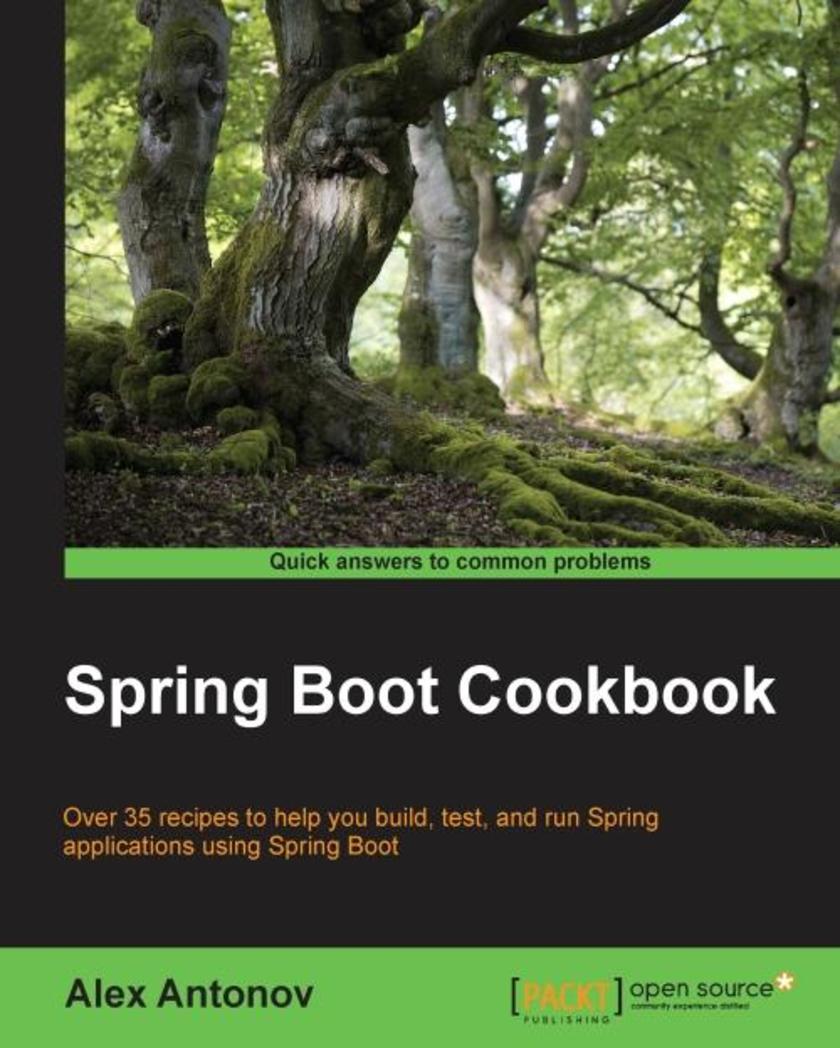
Spring Boot Cookbook
¥54.49
Over 35 recipes to help you build, test, and run Spring applications using Spring Boot About This Book Learn to create different types of Spring Boot applications, configure behavior, and add custom components Become more efficient in testing, deploying, and monitoring Spring Boot based applications This is a practical guide that will help Spring developers to develop and deploy applications using Spring Boot Who This Book Is For If you are a Spring Developer who has good knowledge level and understanding of Spring Boot and application development and now want to learn efficient Spring Boot development techniques in order to make the existing development process more efficient, then this book is for you. What You Will Learn Create Spring Boot applications from scratch Configure and tune web applications and containers Create custom Spring Boot auto-configurations and starters Use Spring Boot Test framework with JUnit, Cucumber, and Spock Configure and tune web applications and containers Deploy Spring Boot as self-starting executables and Docker containers Monitor data using DropWizard, Graphite, and Dashing In Detail Spring Boot is Spring's convention-over-configuration solution. This feature makes it easy to create Spring applications and services with absolute minimum fuss. Spring Boot has the great ability to be customized and enhanced, and is specifically designed to simplify development of a new Spring application. This book will provide many detailed insights about the inner workings of Spring Boot, as well as tips and recipes to integrate the third-party frameworks and components needed to build complex enterprise-scale applications. The book starts with an overview of the important and useful Spring Boot starters that are included in the framework, and teaches you to create and add custom Servlet Filters, Interceptors, Converters, Formatters, and PropertyEditors to a Spring Boot web application. Next it will cover configuring custom routing rules and patterns, adding additional static asset paths, and adding and modifying servlet container connectors and other properties such as enabling SSL. Moving on, the book will teach you how to create custom Spring Boot Starters, and explore different techniques to test Spring Boot applications. Next, the book will show you examples of configuring your build to produce Docker images and self-executing binary files for Linux/OSX environments. Finally, the book will teach you how to create custom health indicators, and access monitoring data via HTTP and JMX. Style and approach This book is a cohesive collection of recipes that provide developers with a set of connected guidelines on how to build, configure, and customize their application, starting from the design and development stages, all the way through testing, deployment, and production monitoring.
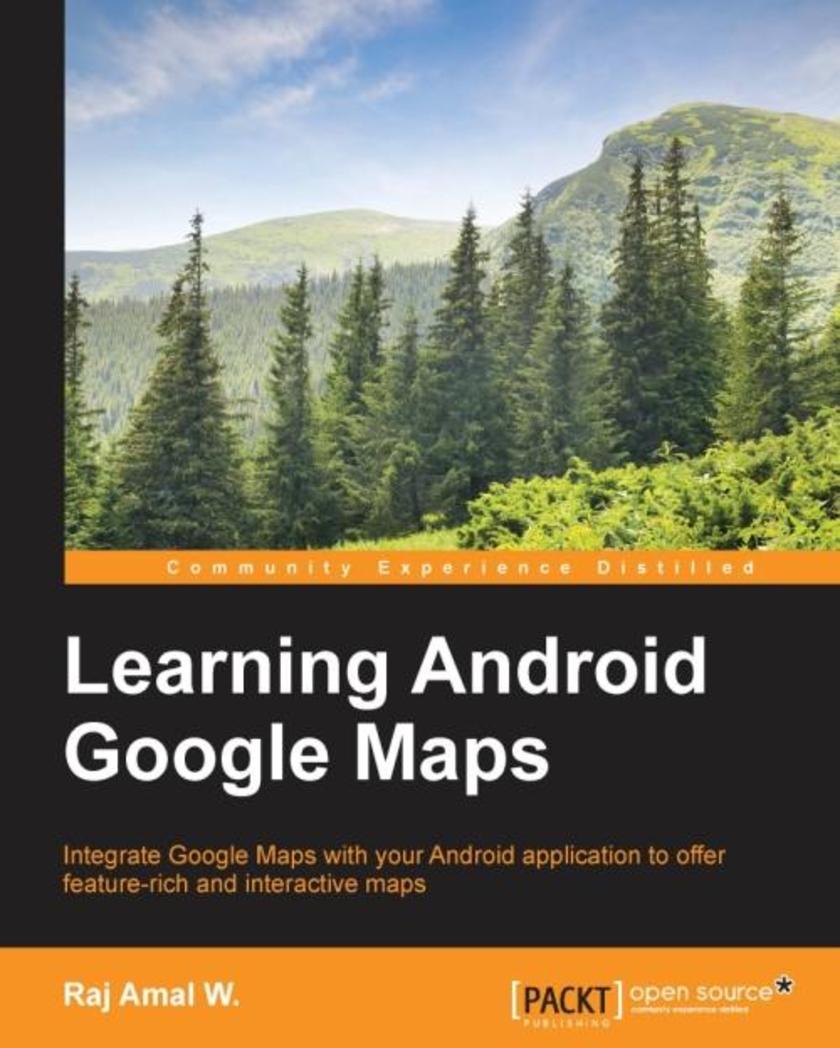
Learning Android Google Maps
¥90.46
Integrate Google Maps with your Android application to offer feature-rich and interactive maps About This Book Set up the development environment and obtain the Google API key to create your first map application Create a cutting edge Google maps application by implementing all the concepts learned A step-by-step tutorial guide that is full of pragmatic examples Who This Book Is For If you are an Android developer and want to integrate maps into your application, then this book is definitely for you. This book is intended for novice Android application developers who would like to get up and running with map rich applications using Google Maps. Some basic development experience would be helpful but it's not a mandate. What You Will Learn Get to know about the basic development environment setup needed to create a successful map application Generate an SHA1 fingerprint, obtain an API key, and create a basic map application Detect different types of maps and implement them in your application Add information to your map such as markers, overlays, information windows, and shapes Explore the interaction with maps and work with gestures Change the different camera views in your map application Work with real-time GPS location data and implementing it in your application Apply Street View and integrate the StreetViewPanoroma fragment to your application Employ the native Google maps application to solve some of the tasks using intents Create a cutting edge Google maps application by implementing all the concepts learned In Detail This book helps you to overcome the most common problems faced by users and helps you create a successful map application without any hassle. The book starts with a brief de*ion of how to set up an environment and obtain an API key to create your map application. This book will teach you about adding markers, overlays, and information windows to the map in detail. You will then dive deep into customizing various types of maps and working with location data and Google Street view. By the end of this book, you will be able to create succinct map applications in Android using Google maps efficiently. Style and approach The book is tailored for the reader with a fundamental approach to Android Google Maps providing a step-by-step introduction to Android Google Maps. It focuses on simple, easy-to-understand examples that are pragmatic and serve as useful basis for real-world applications. Different topics are approached in a bottom-up fashion, gradually going from the simplest foundations to the most advanced features.
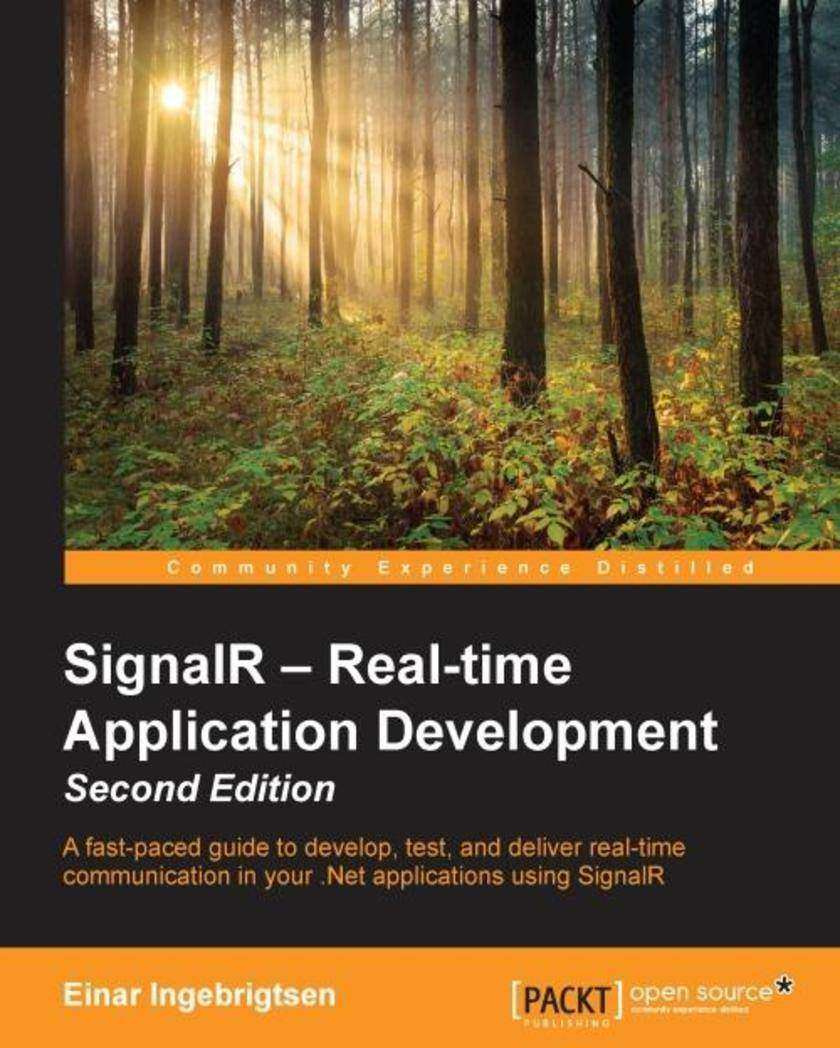
SignalR – Real-time Application Development - Second Edition
¥71.93
A fast-paced guide to develop, test, and deliver real-time communication in your .Net applications using SignalR About This Book Build and test real-time apps in .Net using the new features of SignalR Explore the fundamentals and the new methods and functions in the latest version of SignalR along with developing a complete application from scratch A progressive, hands-on guide to gain an understanding of the SignalR framework Who This Book Is For If you are a .Net developer with good understanding of the .Net platform then this is an ideal book for you to learn how to build real-time apps using the SignalR framework. What You Will Learn Explore the basic knowledge and understanding of SignalR Get to know how to connect client to the server Connecting a client with a server and setting a hub Creating group connections together Understand how to have state in the client to have specific operations Securing SignalR connections How to scale SignalR across multiple servers Building a client for WPF Building a client using Xamarin targeting Windows, iPhone and Android Get to grips with monitoring the traffic in SignalR using Fiddler for Windows and Charles for OSX Setting up code to host SignalR using OWIN In Detail With technology trends, demands on software have changed with more and more skilled users. Over the past few years, with services such as Facebook, Twitter and push notifications on smartphones, users are now getting used to being up to date with everything that happens all the time. With SignalR, the applications stay connected and will generate notifications when something happens either from the system or by other users thus giving new opportunities to enter into this new, exciting world of real-time application development. This is a step-by-step guide that follows a practical approach helping you as a developer getting to get started with SignalR by learning its fundamentals. It will help you through building real-time applications using the new methods and functions in the SignalR framework. Starting from getting persistent connections with the server, you will learn the basics of connecting a client to the server and how the messaging works. This will be followed by setting up a hub on the server and consuming it from a JavaScript client. Next you will be taught how you can group connections together to send messages. We will then go on to know how you can have state in the client to handle specific operations like connecting or disconnecting. Then, moving on you will learn how to secure your SignalR connections using OWIN and scaling SignalR across multiple servers. Next you will learn building a client for WPF and building a client using Xamarin that targets Windows Phone, iPhone and Android. Lastly, you will learn how to monitor the traffic in SignalR using Fiddler, Charles and hosting SignalR using OWIN. Style and approach This is an example- oriented and comprehensive guide to learning the fundamentals of SignalR to build real-time applications. It will help you build real-time applications on the .Net platform in a step-by-step manner along with giving teaching techniques to deal with possible performance bottlenecks and other key topics.
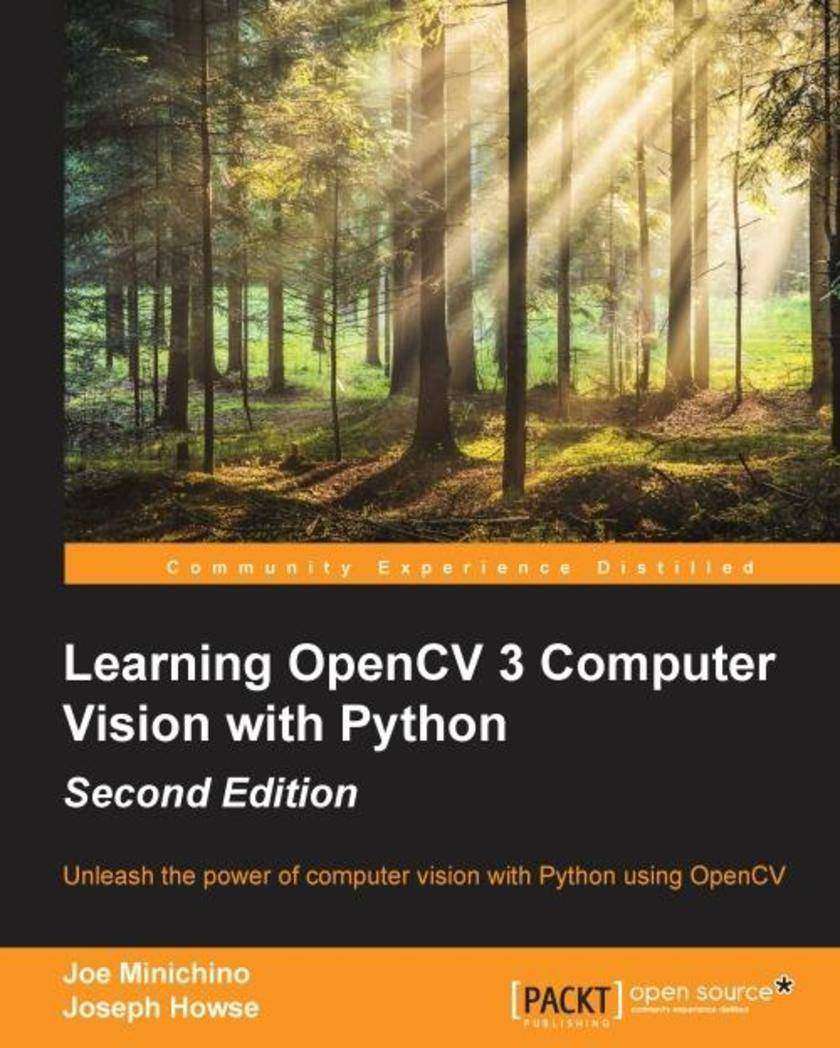
Learning OpenCV 3 Computer Vision with Python - Second Edition
¥80.65
Unleash the power of computer vision with Python using OpenCV About This Book Create impressive applications with OpenCV and Python Familiarize yourself with advanced machine learning concepts Harness the power of computer vision with this easy-to-follow guide Who This Book Is For Intended for novices to the world of OpenCV and computer vision, as well as OpenCV veterans that want to learn about what's new in OpenCV 3, this book is useful as a reference for experts and a training manual for beginners, or for anybody who wants to familiarize themselves with the concepts of object classification and detection in simple and understandable terms. Basic knowledge about Python and programming concepts is required, although the book has an easy learning curve both from a theoretical and coding point of view. What You Will Learn Install and familiarize yourself with OpenCV 3's Python API Grasp the basics of image processing and video analysis Identify and recognize objects in images and videos Detect and recognize faces using OpenCV Train and use your own object classifiers Learn about machine learning concepts in a computer vision context Work with artificial neural networks using OpenCV Develop your own computer vision real-life application In Detail OpenCV 3 is a state-of-the-art computer vision library that allows a great variety of image and video processing operations. Some of the more spectacular and futuristic features such as face recognition or object tracking are easily achievable with OpenCV 3. Learning the basic concepts behind computer vision algorithms, models, and OpenCV's API will enable the development of all sorts of real-world applications, including security and surveillance. Starting with basic image processing operations, the book will take you through to advanced computer vision concepts. Computer vision is a rapidly evolving science whose applications in the real world are exploding, so this book will appeal to computer vision novices as well as experts of the subject wanting to learn the brand new OpenCV 3.0.0. You will build a theoretical foundation of image processing and video analysis, and progress to the concepts of classification through machine learning, acquiring the technical know-how that will allow you to create and use object detectors and classifiers, and even track objects in movies or video camera feeds. Finally, the journey will end in the world of artificial neural networks, along with the development of a hand-written digits recognition application. Style and approach This book is a comprehensive guide to the brand new OpenCV 3 with Python to develop real-life computer vision applications.
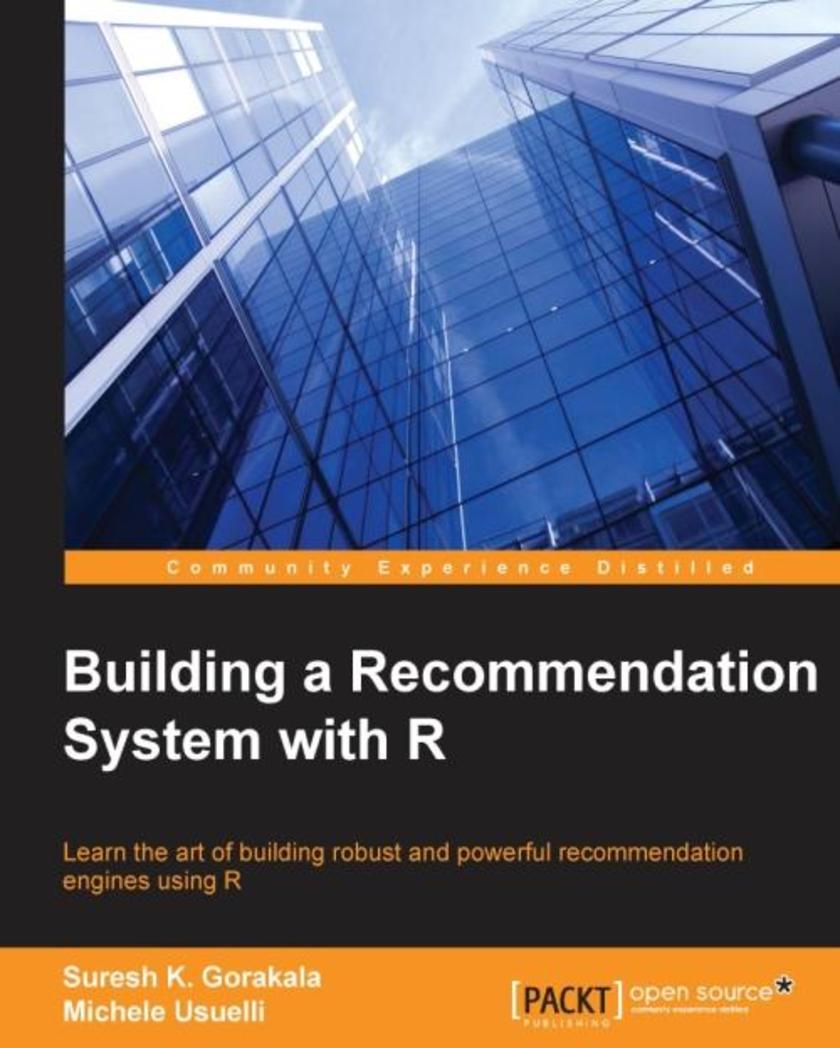
Building a Recommendation System with R
¥54.49
Learn the art of building robust and powerful recommendation engines using R About This Book Learn to exploit various data mining techniques Understand some of the most popular recommendation techniques This is a step-by-step guide full of real-world examples to help you build and optimize recommendation engines Who This Book Is For If you are a competent developer with some knowledge of machine learning and R, and want to further enhance your skills to build recommendation systems, then this book is for you. What You Will Learn Get to grips with the most important branches of recommendation Understand various data processing and data mining techniques Evaluate and optimize the recommendation algorithms Prepare and structure the data before building models Discover different recommender systems along with their implementation in R Explore various evaluation techniques used in recommender systems Get to know about recommenderlab, an R package, and understand how to optimize it to build efficient recommendation systems In Detail A recommendation system performs extensive data analysis in order to generate suggestions to its users about what might interest them. R has recently become one of the most popular programming languages for the data analysis. Its structure allows you to interactively explore the data and its modules contain the most cutting-edge techniques thanks to its wide international community. This distinctive feature of the R language makes it a preferred choice for developers who are looking to build recommendation systems. The book will help you understand how to build recommender systems using R. It starts off by explaining the basics of data mining and machine learning. Next, you will be familiarized with how to build and optimize recommender models using R. Following that, you will be given an overview of the most popular recommendation techniques. Finally, you will learn to implement all the concepts you have learned throughout the book to build a recommender system. Style and approach This is a step-by-step guide that will take you through a series of core tasks. Every task is explained in detail with the help of practical examples.
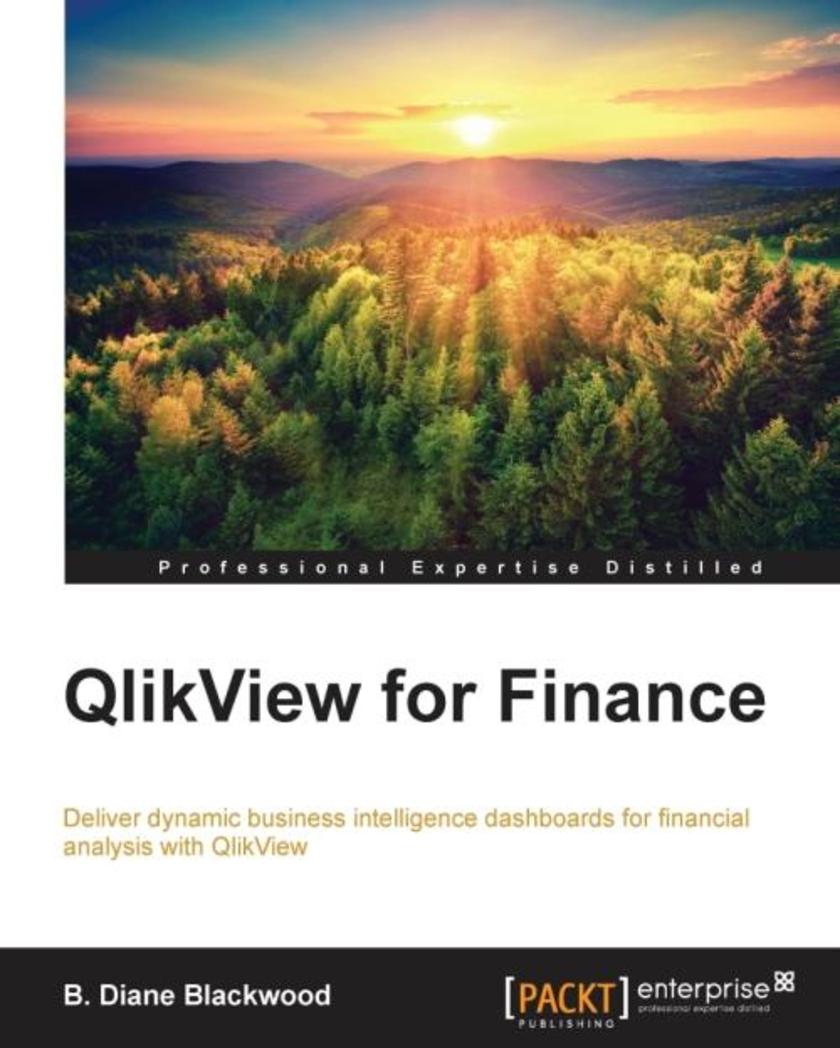
QlikView for Finance
¥63.21
Concoct dynamic business intelligence dashboards for financial analysis with QlikView About This Book Get accustomed to QlikView features for effective data analysis and visualization in Finance Employ the Memory data store, which refreshes data in real time, providing a faster response to business financial information A step-by step guide to using Qlikview features such as key performance indicators, interactive charts, and tables for financial analysis Who This Book Is For If you are a finance professional with basic knowledge of QlikView functions and wish to increase your knowledge of QlikView to apply it in the field of finance, then this book is for you. A good knowledge of financial aspects is an must-have. What You Will Learn Design Key Performance Indicators and extend your revenue ratio reporting Set up actions within a Text Object and create variables to make a chart toggle between visible and not visible Merge data from multiple sources to get more asset management options Examine good and bad practices in dashboard design and create a Group button to make more data available in less space Analyse the sales dashboard by adding tending lines and forecasting Create input boxes and use the input in formulas to perform “What If” analysis Examine the Key Performance Indicator (KPI) and Inventory Turnover, and investigate the usefulness of Pivot Create a QlikView analysis document and add data to it to gain deep insights In Detail This book is an effective step-by-step tutoring guide for financial analysis using Qlikview. It begins by teaching you the crucial concepts of Qlikview Finance to help you develop an effective understanding of financial data analysis and finance. The book then goes on to cover real-world, practical examples on the use of Qlikview for financial planning and analysis, expense management, risk management, and more. Moving on, topics such as Asset Management QlikView Dashboard and Retail Sales Analysis are covered in a strategic way. We then shift the focus to deal with the concepts of Inventory, Supply Chain, and Plant Coverage Dashboards. The book then reaches its conclusion by dealing with ways to share your QlikView insights. By the end of this book, you will have a good understanding of how to use Qlikview for numerous applications in finance. Style and approach This book is designed to explore what can be done in QlikView to facilitate Financial Analysis. It follows a step-by-step approach and each chapter has easy-to-follow, hands-on examples of important concepts.

Unity Character Animation with Mecanim
¥90.46
A detailed guide to the complex new animation tools in Unity, packed with clear instructions and illustrated with original content in the context of a next generation zombie apocalypse adventure game About This Book Create and export models and animation sequences to Unity from 3ds max and Maya Prepare character models and animation for games using Mecanim’s rigging tools Retarget, adjust, and mix and match motion capture and other animation data Write and edit *s compatible with Mecanim Animation Controllers Who This Book Is For If you are a Unity developer looking to get to grips with the character animation specific tools, a 3D software user who is new to Unity, or a beginner game developer who is interested in character animation and interaction, this book is ideal for you. Some experience with either the Unity interface or basic 3D coordinates is recommended, but not required. What You Will Learn Learn how to prepare a rigged character model to receive animation within Unity Acquire efficient techniques to refine and optimize motion capture data Retarget animation sequences between different character rigs Discover how to rig a humanoid character and export for use in Unity Script character interaction for a First Person character model Create dynamic animation sequences from scratch using keyframe techniques, in a variety of 3D software packages Learn Project Management in Unity Understand how to set up a complex facial rig for speech Set up Animation Controllers with masked states and blend trees to create seamless and additive animation transitions Construct a ragdoll game object and instantiate it in a game Devise Mecanim animation integration for the player and AI driven animation for enemy characters In Detail Game animation for independent developers has taken a giant leap forward with Unity's Mecanim toolset, which streamlines the import/export, retargeting, and many other aspects of the character animation workflow. Unity Character Animation with Mecanim is a great primer for getting to know the nuts and bolts of Mecanim and other character animation related tools in Unity. It offers you step-by-step instructions for preparing and exporting rigged models and animation sequences from commonly used 3D packages, such as Maya, 3ds Max and Blender. This book explores the new set of animation tools introduced with Mecanim in Unity. Approaching its subject matter through a typical genre–a zombie action game, character animation techniques are explored using real examples of player input and interaction, enemy behavior, and other aspects of game dynamics. As the book progresses, the reader will understand how these elements fit together in a small game development workflow. We will begin with a demonstration of the process of getting a rigged character into Unity and setting it up to use provided animation sequences. We will also consider a few industry standard 3D packages and how these can be used to rig a humanoid character for use in Unity. We will demonstrate the retargeting capabilities of Mecanim’s Humanoid Animation type by adjusting motion sequences to fit disparate character types in our game. After this, we will look at Ragdoll physics and the implementation of this commonly used technique in a Mecanim workflow. The book culminates with a thorough dissection of the enemy character AI * incorporating the Mecanim elements detailed in the previous chapters. Unity Character Animation with Mecanim will provide you with a detailed exploration of the interaction between game development and character animation, and will broaden your understanding of the rich animation toolset within Unity. Style and approach A comprehensive guide, featuring step- by- step practical tutorials using sample assets, showing you how to build fully controllable characters and non-player characters/enemies.
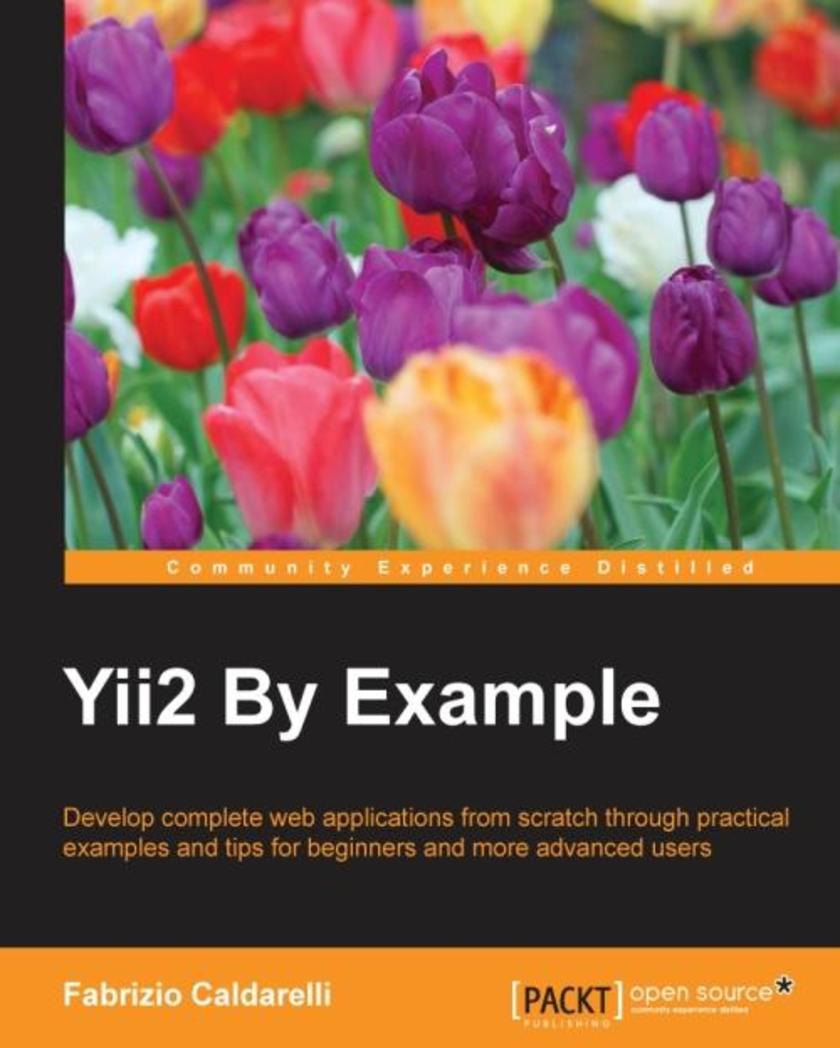
Yii2 By Example
¥80.65
Develop complete web applications from scratch through practical examples and tips for beginners and more advanced users About This Book Improve your programming experience and become a full stack developer Master real-life web applications, and create and manage four different projects Step-by-step guidance to develop real-world web applications smoothly Who This Book Is For This book is for anyone who wants to discover and explore Yii Framework. Basic programming experience with PHP and object oriented programming is assumed. What You Will Learn Understand basic concepts, along with the installation and customization of Yii Discover models, controllers, and views—concepts applied in a web context—and how they are employed in Yii Use ActiveRecord to manipulate a database Add access control to your web application through authentication and authorization Install and customize an advanced template for multiple applications in the same project Create a RESTful Web Service to allow remote access to data Develop a console application to launch a command in the console as an automated task (cron job) Make code reusable through widgets and components and localize text messages to make a multilanguage web app In Detail Yii is a high-performance PHP framework best for developing Web 2.0 applications. It provides fast, secure, and professional features to create robust projects, however, this rapid development requires the ability to organize common tasks together to build a complete application. It's all too easy to get confused; this is where this book comes in. This book contains a series of practical project examples for developers starting from scratch. Each section contains the most relevant theories for every topic as you walk through developing each project, focusing on key aspects that commonly confuse users. The book starts with all the framework’s basic concepts, such as controllers and views, to introduce you to Yii and creating your first application, a simple news reader. You will be learn to configure URL rules to make a pretty URL, essential for search engine optimization. Next, you will walk through Model and ActiveRecord, key concepts in database interaction. The second application you will develop is a reservation system that allows you to manage rooms, customers, and reservations. For this, you will use database connection through SQL and ActiveRecord. More complex than the first one, this application will introduce you to the advanced template of Yii 2, splitting the app into two parts: a frontend for all visitors and a backend for the admin. Finally, you will move on to the last two applications: one that allows connections from remote clients, through RESTful components of Yii 2, and another that creates and organizes automatic tasks using the console application structure of Yii 2. Style and approach This is a step-by-step guide with each topic introduced in the context of real-world applications, highlighting common cases where users may encounter difficulties.
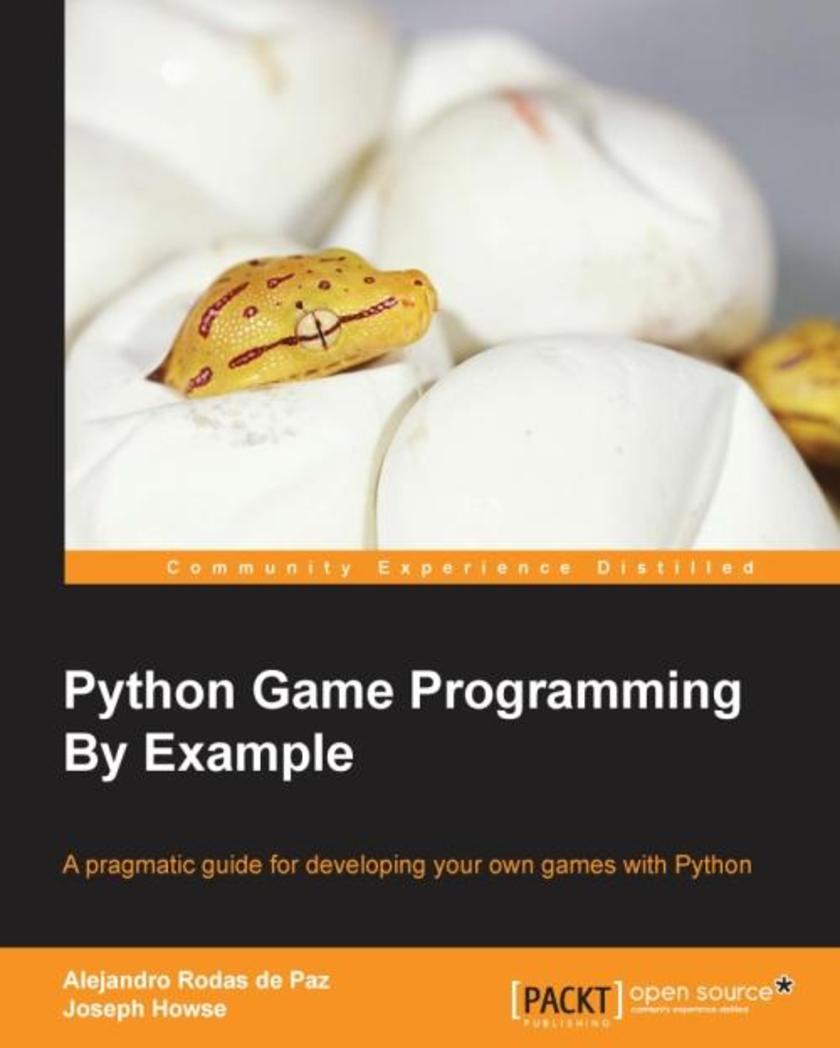
Python Game Programming By Example
¥71.93
A pragmatic guide for developing your own games with Python About This Book Strengthen your fundamentals of game programming with Python language Seven hands-on games to create 2D and 3D games rapidly from scratch Illustrative guide to explore the different GUI libraries for building your games Who This Book Is For If you have ever wanted to create casual games in Python and you would like to explore various GUI technologies that this language offers, this is the book for you. This title is intended for beginners to Python with little or no knowledge of game development, and it covers step by step how to build seven different games, from the well-known Space Invaders to a classical 3D platformer. What You Will Learn Take advantage of Python’s clean syntax to build games quickly Discover distinct frameworks for developing graphical applications Implement non-player characters (NPCs) with autonomous and seemingly intelligent behaviors Design and code some popular games like Pong and tower defense Compose maps and levels for your sprite-based games in an easy manner Modularize and apply object-oriented principles during the design of your games Exploit libraries like Chimpunk2D, cocos2d, and Tkinter Create natural user interfaces (NUIs), using a camera and computer vision algorithms to interpret the player’s real-world actions In Detail With a growing interest in learning to program, game development is an appealing topic for getting started with coding. From geometry to basic Artificial Intelligence algorithms, there are plenty of concepts that can be applied in almost every game. Python is a widely used general-purpose, high-level programming language. It provides constructs intended to enable clear programs on both a small and large scale. It is the third most popular language whose grammatical syntax is not predominantly based on C. Python is also very easy to code and is also highly flexible, which is exactly what is required for game development. The user-friendliness of this language allows beginners to code games without too much effort or training. Python also works with very little code and in most cases uses the “use cases” approach, reserving lengthy explicit coding for outliers and exceptions, making game development an achievable feat. Python Game Programming by Example enables readers to develop cool and popular games in Python without having in-depth programming knowledge of Python. The book includes seven hands-on projects developed with several well-known Python packages, as well as a comprehensive explanation about the theory and design of each game. It will teach readers about the techniques of game design and coding of some popular games like Pong and tower defense. Thereafter, it will allow readers to add levels of complexities to make the games more fun and realistic using 3D. At the end of the book, you will have added several GUI libraries like Chimpunk2D, cocos2d, and Tkinter in your tool belt, as well as a handful of recipes and algorithms for developing games with Python. Style and approach This book is an example-based guide that will teach you to build games using Python. This book follows a step-by-step approach as it is aimed at beginners who would like to get started with basic game development. By the end of this book you will be competent game developers with good knowledge of programming in Python.
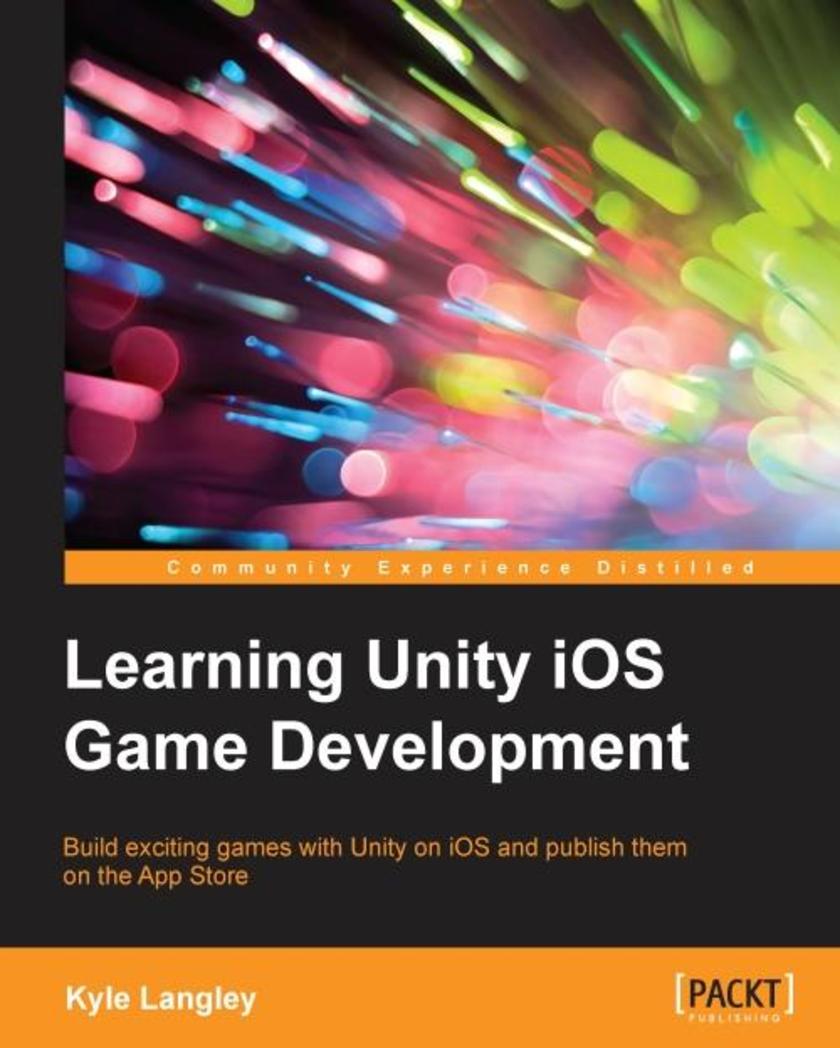
Learning Unity iOS Game Development
¥80.65
Build exciting games with Unity on iOS and publish them on the App Store About This Book Take advantage of Unity 5's new tools to create a fully interactive mobile game Learn how to connect your iTunes developer account and use Unity 5 to communicate with it Use your Macintosh computer to publish your game to the App Store Who This Book Is For This book is for iOS developers who want to learn how to build games with Unity for the iOS platform. Some prior experience in game development would be useful. What You Will Learn Create your own iTunes Connect Developer account and create an app within it Set up iTunes Game Center features in iTunes Connect so you can use them within Unity 5 Construct a game using C# that allows users to interactively control the game character Use Unity 5's editor window to create a custom editor tool specific for the game made in the book Store and keep track of data so the player is able to collect in-game pick-ups that can be used to purchase in-game goods Use all game features so the player is able to fully navigate menus between the front menu and in the game state Make, test, and finally release builds so you can play on your device and then submit the game to Apple for review In Detail Over recent years, the market for mobile game development using Unity has grown multi-fold with an overwhelming 600 million gamers playing games developed using Unity engine. The newly launched Unity 5 offers a wide range of dedicated and powerful tools for iOS developers who intend to follow the basics and gradually elevate their skills to revolutionize the way they design and publish games for the App Store. From beginners, to those who are experienced making video games, this book goes through the steps of using Unity 5 to make a game from the ground up and setting the game up with iTunes Game Center features. The book begins with an introduction to setting up an iTunes Connect developer account, this will allow you to use Unity to its full potential with iOS. You will create a new app in iTunes Connect with the settings for Apple approval. You will learn, in detail, how to use Unity 5 and the programming language C# to make a fully interactive game that keeps track of player progress, Game Center Leaderboards, and Achievements, as well as displaying iAds and offering In-App purchases. Moving on, you’ll discover how to create development and release builds, enabling you to test the game on your device before finally submitting the game for Apple’s approval. By the end of the book, you will have a complete understanding of how iTunes and Unity can be used in combination to build and publish a fully interactive and reliable game to the App Store. Style and approach This is a step-by-step guide that covers the fundamentals of gaming and reveals the secrets of building and monetizing games for the iOS platform.

Unreal Engine Physics Essentials
¥71.93
Gain practical knowledge of mathematical and physics concepts in order to design and develop an awesome game world using Unreal Engine 4 About This Book Use the Physics Asset Tool within Unreal Engine 4 to develop game physics objects for your game world Explore the Collision mechanics within Unreal Engine 4 to create advanced, real-world physics A step-by-step guide to implementing the Physics concepts involved in Unreal Engine 4 to create a working Vehicle Blueprint Who This Book Is For This book is intended for beginner to intermediate users of Epic Games' Unreal Engine 4 who want to learn more about how to implement physics within their game-world. No matter what your knowledge base of Unreal Engine 4 is, this book contains valuable information on blueprint *ing, collision generation, materials, and the Physical Asset Tool (PhAT) for all users to create better games. What You Will Learn Get to know basic to intermediate topics in mathematics and physics Create assets using the Physics Asset Tool (PhAT) in Unreal Engine 4 Develop Collision Hulls, which are necessary to take advantage of Unreal Engine 4’s physics and collision events Use constraints to create advanced physics-based assets for your game-world Working knowledge of physics bodies, physics damping, and friction within Unreal Engine 4 Develop physical materials to recreate real-world friction for substances such as glass and ice Create a working vehicle blueprint from scratch using assets provided by Unreal Engine 4 Gain knowledge about implementing advanced physics in Unreal Engine 4 using C++ programming In Detail Unreal Engine 4 is one of the leading game development tools used by both AAA and independent developers alike to create breathe-taking games. One of the key features of this tool is the use of Physics to create a believable game-world for players to explore. This book gives readers practical insight into the mathematical and physics principles necessary to properly implement physics within Unreal Engine 4. Discover how to manipulate physics within Unreal Engine 4 by learning basic real-world mathematical and physics concepts that assist in the implementation of physics-based objects in your game world. Then, you'll be introduced to PhAT (Physics Asset Tool) within Unreal Engine 4 to learn more about developing game physics objects for your game world. Next, dive into Unreal Engine 4’s collision generation, physical materials, blueprints, constraints, and more to get hands-on experience with the tools provided by Epic to create real-world physics in Unreal Engine 4. Lastly, you will create a working Vehicle Blueprint that uses all the concepts covered in this book, as well as covering advanced physics-based topics. Style and approach An easy-to-follow reference text filled with working examples of physics within Unreal Engine 4. Each topic is broken down to easily explain how to implement physics and physical objects in your game-world using the tools provided by Epic Games Unreal Engine 4.
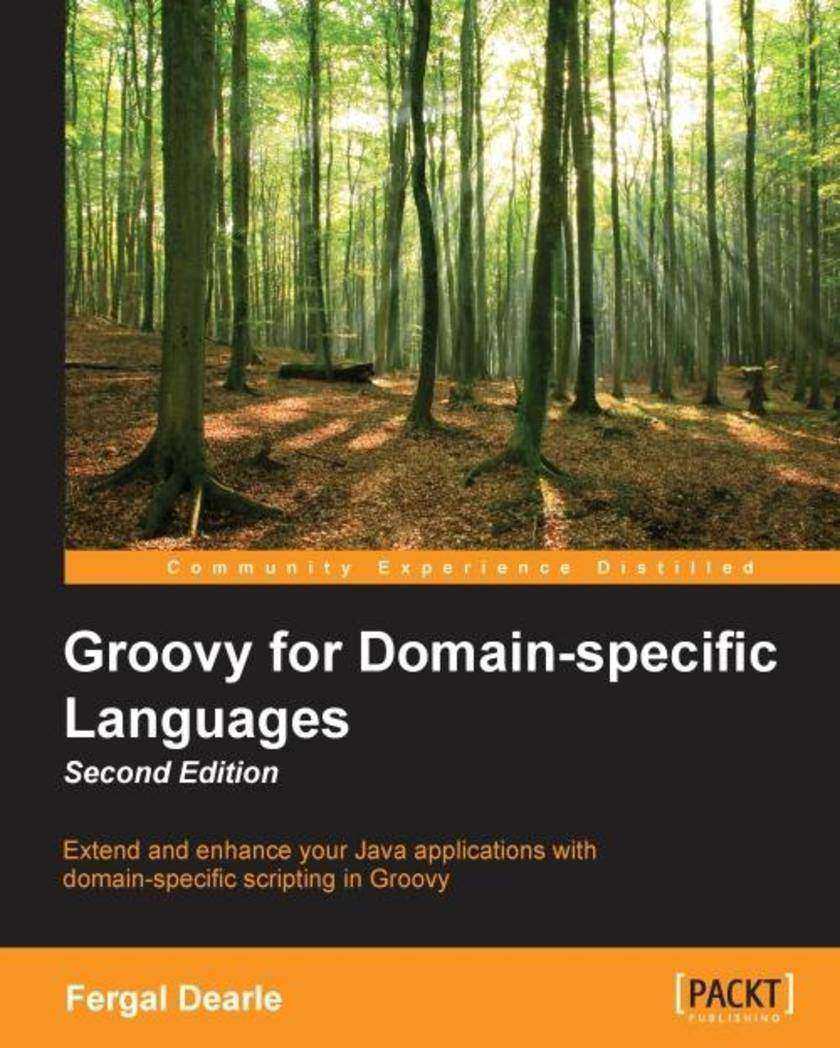
Groovy for Domain-specific Languages - Second Edition
¥90.46
Extend and enhance your Java applications with domain-specific *ing in Groovy About This Book Build domain-specific mini languages in Groovy that integrate seamlessly with your Java apps with this hands-on guide Increase stakeholder participation in the development process with domain-specific *ing in Groovy Get up to speed with the newest features in Groovy using this second edition and integrate Groovy-based DSLs into your existing Java applications. Who This Book Is For This book is for Java software developers who have an interest in building domain *ing into their Java applications. No knowledge of Groovy is required, although it will be helpful. This book does not teach Groovy, but quickly introduces the basic ideas of Groovy. An experienced Java developer should have no problems with these and move quickly on to the more involved aspects of creating DSLs with Groovy. No experience of creating a DSL is required. What You Will Learn Familiarize yourself with Groovy *ing and work with Groovy closures Use the meta-programming features in Groovy to build mini languages Employ Groovy mark-up and builders to simplify application development Familiarize yourself with Groovy mark-up and build your own Groovy builders Build effective DSLs with operator overloading, command chains, builders, and a host of other Groovy language features Integrate Groovy with your Java and JVM based applications In Detail The times when developing on the JVM meant you were a Java programmer have long passed. The JVM is now firmly established as a polyglot development environment with many projects opting for alternative development languages to Java such as Groovy, Scala, Clojure, and JRuby. In this pantheon of development languages, Groovy stands out for its excellent DSL enabling features which allows it to be manipulated to produce mini languages that are tailored to a project’s needs. A comprehensive tutorial on designing and developing mini Groovy based Domain Specific Languages, this book will guide you through the development of several mini DSLs that will help you gain all the skills needed to develop your own Groovy based DSLs with confidence and ease. Starting with the bare basics, this book will focus on how Groovy can be used to construct domain specific mini languages, and will go through the more complex meta-programming features of Groovy, including using the Abstract Syntax Tree (AST). Practical examples are used throughout this book to de-mystify these seemingly complex language features and to show how they can be used to create simple and elegant DSLs. Packed with examples, including several fully worked DSLs, this book will serve as a springboard for developing your own DSLs. Style and approach This book is a hands-on guide that will walk you through examples for building DSLs with Groovy rather than just talking about "metaprogramming with Groovy". The examples in this book have been designed to help you gain a good working knowledge of the techniques involved and apply these to producing your own Groovy based DSLs.




 购物车
购物车 个人中心
个人中心



